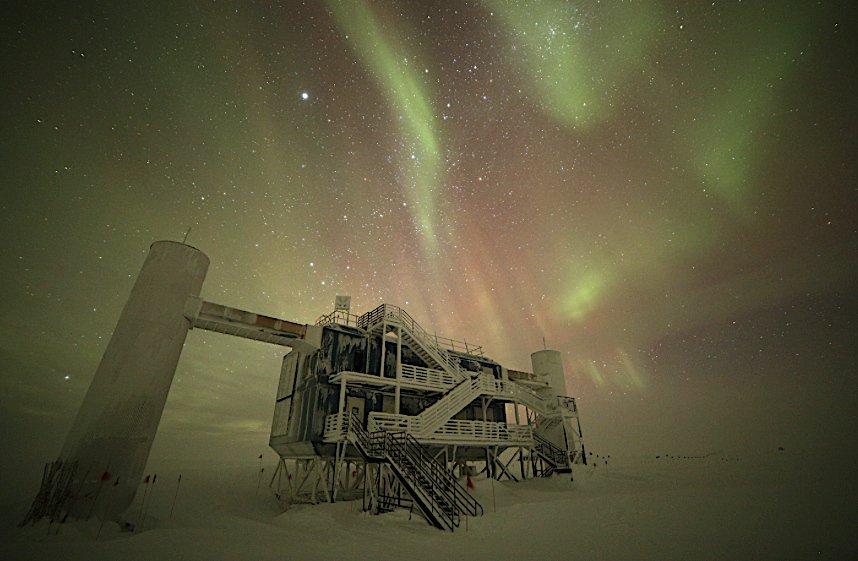
Why us? Why now?
Credit: Christian Krueger, IceCube/NSF
Physics is at the cusp of an extraordinary moment in history. With a new generation of large-scale surveys set to provide unparalleled access to both the visible and invisible universe, we are entering a new era of precision science. When combined, these surveys represent an unprecedented convergence of observational capabilities across a range of scales, and present an exceptional opportunity for ground-breaking discoveries, paving the way for transformational insights into the nature of dark matter and the origins of the Universe's structure.
Achieving these goals requires mastery of the details of particle physics and astronomy, and their interaction, with a high level of precision of order 10% in our empirical measurements and the predictions of our best theories.
This challenging goal requires close collaboration between particle physicists, astrophysicists, and cosmologists, with the necessary expertise and access to the range of particle physics experiments and astronomical surveys that can constrain the properties of dark matter .
Demonstration of galaxy fields obtained from the Hubble Space Telescope and the James Webb Space Telescope.
Credit: Aaron Robotham, ICRAR/UWA, NASA JWST & HST
DarkMaps brings together this Australian community of particle physicists, astrophysicists, and cosmologists into a ground-breaking close collaboration. We are uniquely positioned to make an internationally-leading contribution to characterising dark matter across all scales where it is expected to be observed.
Our multi-disciplinary team leverages a breadth of scientific and technical expertise; by working together, across disciplinary boundaries and with the synergy of empiricists and observers, theorists and computational modellers, and instrumentalists, we are uniquely placed to achieve the high degree of precision needed for a new level of understanding of dark matter.
Cosmic chronology in 21-cm with two zoom-ins illustrating the impact from alternative dark matter models. Measurements from radio interferometers such as The Hydrogen Epoch of Reionization Array (HERA), Murchison Widefield Array (MWA) and upcoming Square Kilometre Array (SKA), will reveal the enigma of ancient galaxies and dark matter. (https://iopscience.iop.org/article/10.1088/1475-7516/2024/01/005)
Credit: Yuxiang Qin, ANU


